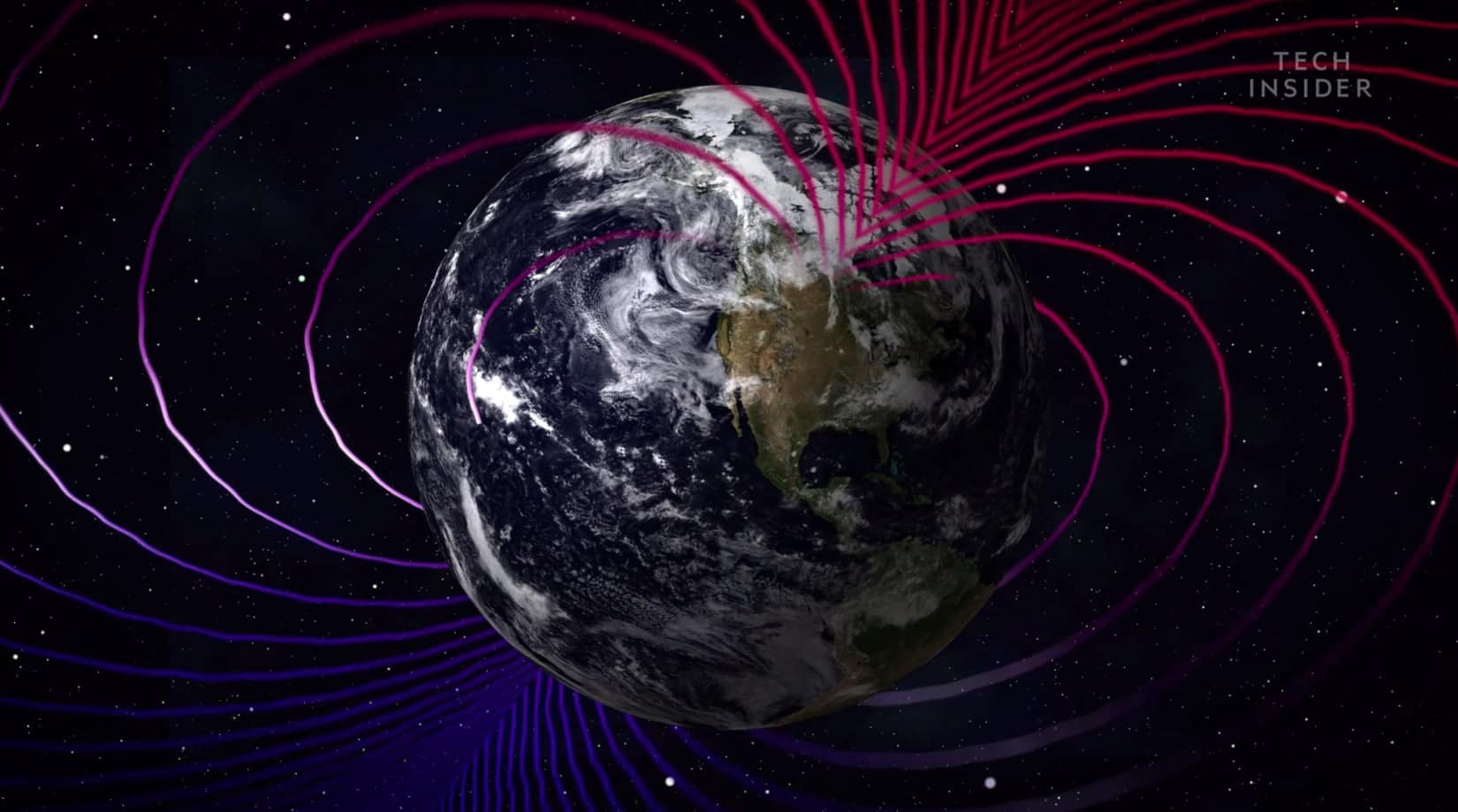The Earth was totally turned upside down when its magnetic poles reversed 42.000 years ago.
Scientists have known about this phenomenon of magnetic pole reversal since the late 60s. The magnetic poles of the Earth are not static: they are generated by electric currents from the planet's liquid outer core, constantly in motion.
Earth's magnetic north pole has been wandering around stretches of northern Russia quite a bit lately.
An underestimated catastrophe
Scientists didn't think the latest magnetic pole shift had a major environmental impact. Sure, the planet's magnetic field weakened, allowing more cosmic rays to penetrate the atmosphere, but plant and animal life was believed not to have been greatly affected.
A new study suggests a more dramatic phenomenon: during the magnetic pole shift the additional cosmic rays may have reduced ozone concentrations, leading to much more ultraviolet radiation in the atmosphere.
Climate change may have expanded the ice sheet over North America and dried out Australia, causing the extinction of many large mammal species. A solar storm, meanwhile, may have pushed ancient humans to seek refuge in caves, and become extinct due to the scarcity of resources.

The end of days
“It could have been an incredibly scary time, almost like the end of days,” he said Chris Turney, a geologist at the University of New South Wales, in a video describing the new research.
Scientists haven't come up with a definitive theory as to why Neanderthals disappeared. Some research suggests their extinction occurred naturally, as Neanderthals interbred with modern humans or the population became too small to hunt, mate and raise children. Other scientists have speculated that Neanderthals may have competed for resources when modern humans began populating Europe.
However, it is probably no coincidence that the Neanderthals went extinct in conjunction with a major reversal of the Earth's magnetic poles. suggests Turney's study.
“Different disciplinary areas have recently begun to discuss the topic,” says the co-author of the study Alan cooper. “And they all converge on the likely impact of the key event 42.000 years ago.
What is Earth's pole reversal?
The reversal of the Earth's poles is a process that takes place over thousands of years. The north and south poles switch places and the magnetic poles also reverse. This causes a change in the Earth's climate and the distribution of animals and plants.
Ancient trees and caves contain clues to a magnetic pole reversal and climate disaster

To find out what happened to the Earth's poles (and Earth's climate) 42.000 years ago, scientists asked a New Zealander who witnessed the event at the time: an ancient kauri tree. The tree rings serve as a record of levels of radiocarbon (a radioactive isotope) in the atmosphere. These rings showed evidence of increased radiocarbon as magnetic fields changed, an event known as the “Laschamps excursion.”
The event of the magnetic pole reversal is not unique in the history of our planet. The British Geological Survey estimates that similar reversals occur every million years.
During this pole reversal, the magnetic shield that protects our planet from the solar wind weakens. The north and south magnetic poles of the Earth, not to be confused with the geographic points further north and south of the planet, swap places.
The Laschamp excursion

The most recent example of this magnetic reversal probably occurred within a span of 1.000 years.
“In that process of pole reversal the magnetic field terrestrial has actually almost disappeared,” Turney said. “The planet was hit by all these high-energy particles coming from space.”
If the sun had emitted very high levels of radiation in a solar storm during that time, the Neanderthals may have had to desperately seek shelter.
The first sunscreen
Indeed, the Laschamps excursion coincided with an increase in cave use in Europe and Southeast Asia. In particular, researchers have found in caves red ocher handprints dating back to around 40.000 years ago.
According to the new study, this pigment may have served as an ancient form of sunscreen.
The handprints with red ocher in the El Castillo cave in Spain could represent the use of this ancient sunscreen.
Magnetic pole reversal and Neanderthal extinction: more data needed
Not all researchers are convinced by Turney and Cooper's analysis. Chris Stringer, an anthropologist at the Natural History Museum in London, told The Guardian that although the Laschamps excursion may have contributed to the demise of Neanderthals, it is difficult to know exactly when they became extinct.
“They survived longer and ranged more widely than just Europe, and we have very little data on the timing of their eventual demise in parts of Asia,” Stringer said.
James Channell, a geologist at the University of Florida, told NPR that ice cores dating back 42.000 years do not indicate a global climate crisis. However, he added, "there appears to be a link" between the extinction of large mammals and the weakening of the Earth's magnetic field.
Either way, the new study offers a hint of what might happen if there was a new magnetic pole reversal.
Could a new magnetic pole reversal be imminent?

Scientists know that the Earth's magnetic field it has weakened by about 9% over the past 170 years. The magnetic north pole has also moved more rapidly since the 90s, at a speed of between 50 and 64 kilometers per year.
“This has fueled fears that a new magnetic pole shift may be imminent,” the researchers wrote. Such an event could potentially knock out power and satellite networks. Among the harmful effects of the possible inversion of the Earth's poles, there is also a (much) greater exposure to diseases such as cancer.
Most research agrees, however, that any possible magnetic reversal would be in its early stages. Earth's magnetic field is still much stronger than the last magnetic pole reversal. In summary: magnetic field inversion? Not now, baby.


